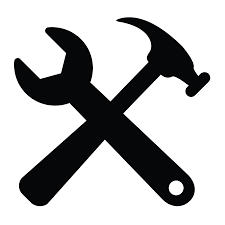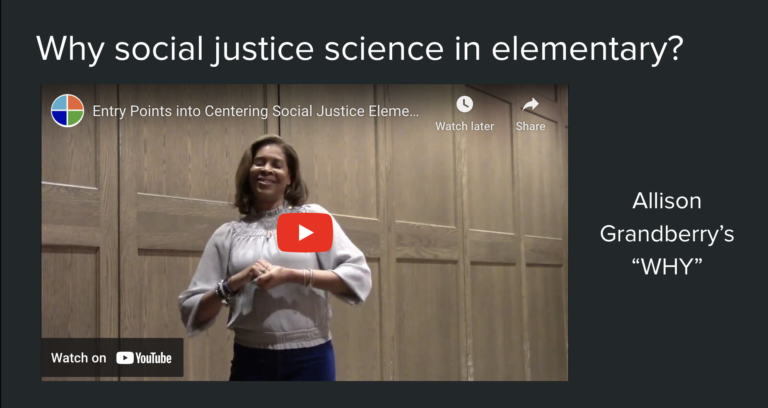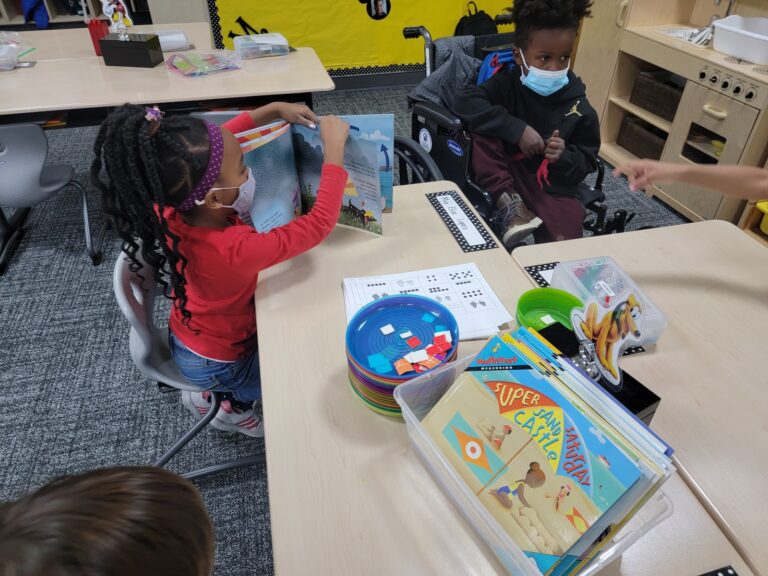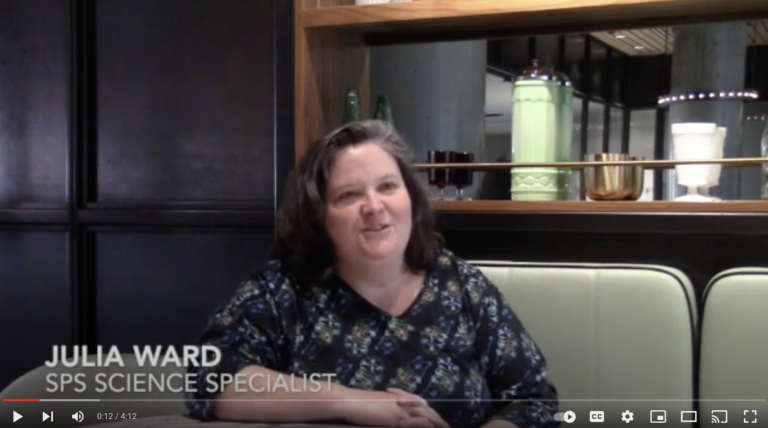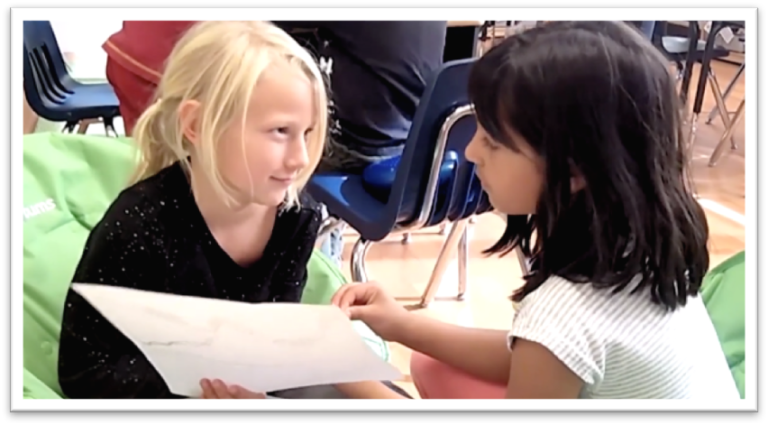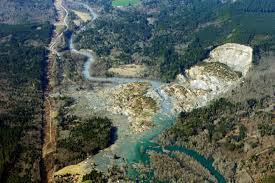-
A case study for establishing distributed leadership capacity among teachers across a district.

-
A tool to support teachers in learning about Ambitious Science Teaching (AST) tools for action research purposes.

-
Interactive examples to plan for the importance of centering social justice in elementary science classrooms.

-
Explore ways to select science read-alouds that center justice

-
This professional learning resource shares the story of the Seattle Public Schools science specialists and how they organized professional learning…

-
Elementary / High School / Middle School / Planning / Pressing / Video / Professional Learning / Teacher Educator / Teacher K-12 /How science investigations can expand beyond standard classroom activities

-
Tips for co-creating “gotta have” checklists with students
-
Several examples of sixth-grade students interacting with each other’s reasoning as they work to make sense of how sound travels.

-
Several groups of fifth-graders share their thinking about a 1000-year-old artifact

-
Some content on this site is available to members only. Please create an account or login for full access.
-
On this webpage, you find what we call AST Unit Starter Bundles. As the name suggests, these materials should give…
-
Throughout this unit, students investigate the properties of ice cream as a solid and liquid to help address standards about…
-
Students investigate a phenomenon where a kitten, “Creamsicle”, with cream fur is born to orange fur parents. Readings and activities…
-
The practices of scientific argumentation and modeling involve using evidence and reasoning to create and evaluate claims about how or…
-
Unit guide for STC Land & Water Kit revised to meet Next Generation Science Standards. It reframes the kit around…
-
In this 2nd grade unit, students construct their explanations about a puzzling and historical phenomenon: Why did a town next…
Ambitious Teaching—An overview
In this video we illustrate what Ambitious Teaching looks like in classrooms ranging from high school to kindergarten. The practices were developed through collaborations between teachers and researchers, and they are continually evolving as we learn more about how they work with young learners. There are several themes that you’ll see in all examples, such as a focus on puzzling and complex phenomena, opportunities to make sense through talk, making thinking visible, attending to who is participating, using various forms of scaffolding and tools, and much more.
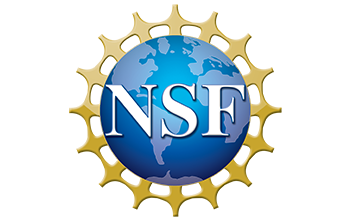 This site is primarily funded by the National Science Foundation (NSF) through Award #1907471 and #1315995
This site is primarily funded by the National Science Foundation (NSF) through Award #1907471 and #1315995
 This site is primarily funded by the National Science Foundation (NSF) through Award #1907471 and #1315995
This site is primarily funded by the National Science Foundation (NSF) through Award #1907471 and #1315995





